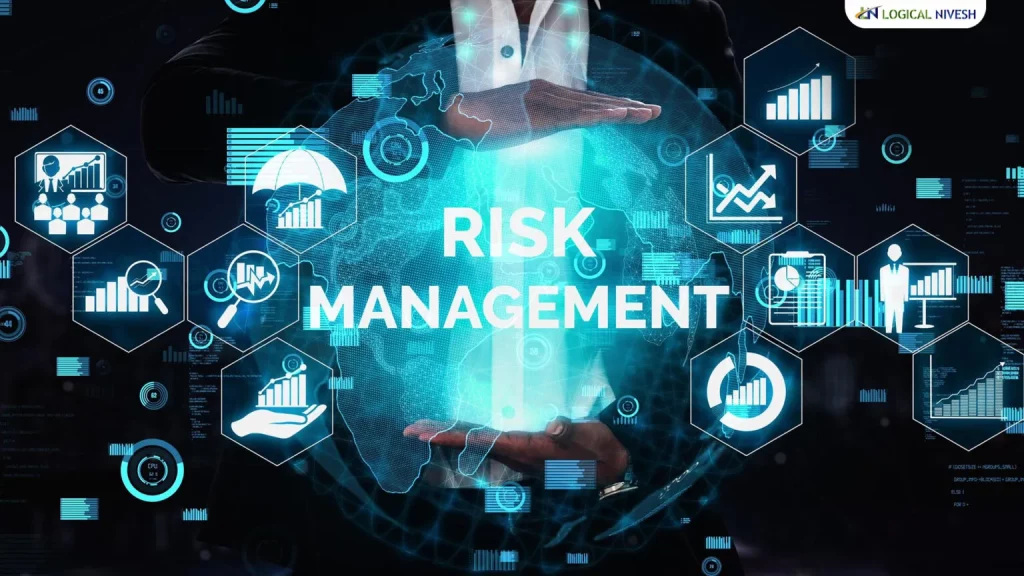The world is full of risks! There is no scope for growth and improvement if one is not willing to take any risk. The best outcome of any effort comes from taking the biggest of risks. Taking risks in the trading world is the norm. But managing that risk is an art that investment enthusiasts as well as pros pay special attention to. So what exactly is this risk management and why should investors need to master it?
What is Risk Management?
It is the process that starts with identifying and analysing, then goes on to accepting or modifying ambiguity while making any investment decision. Under this, the involved party (investor or fund manager), monitors as well as deals with any sort of financial risk related to the investment. When the investor contemplates and measures the chances of bearing losses in a particular investment, this is where Risk Management comes into the picture. And eventually, that investor finds out a way to take suitable steps to mitigate that risk in order to meet his profit-making and loss-minimising objectives.
How Can a SEBI-Certified Research Analyst Help You Understand it Better?
The Logical Nivesh is the place where you will get answers to all your Risk Management related queries. Our SEBI-Certified Research Analyst, Ashutosh Bhardwaj is here to clear all your doubts regarding the matter. Here is a list of benefits a pro like him can offer to investment aspirants:
1. Risk Identification: As these specialists keep themselves attuned to market fluctuations as well as well-established economic factors, they can without a doubt help you single out the associated risks with a particular investment.
2. Detailed Analysis: A Research Analyst who has been certified by the Securities and Exchange Board of India (SEBI) can help you navigate through the alleys of the financial market. Their analysis methods can be utilised across stocks, bonds, commodities, and currencies, to name a few.
3. Risk Mitigation: Other than identifying the potential risks in the financial market, the Research Analyst can come up with precise risk mitigation strategies. It includes but is not limited to setting stop-loss orders, banking on hedging instruments, or simply adjusting the asset allocation in your portfolio.
4. Expansion of Portfolio: By building a diversified portfolio, where you can invest in different assets and simultaneously spread your investment related risks across those assets, you can manage the risks effectively and efficiently. An analyst’s insights help you bear the consequences of investing in a single asset.
5. Recommendations: After and while analysing the entire market condition, a dedicated research analyst keeps you posted on regular market updates and recommendations that are based on market conditions. This way you stay abreast with the evolving market and make changes in your portfolio as required.
6. Compliance: When SEBI certifies someone to be the research analyst, it abides by “regulatory standards and ethical practices”. Consequently, you gain more confidence in their advice that it is reliable and in compliance with the usual industry regulations.
7. Educational Support: The thorough understanding of a research analyst guides his or her pupils to also have a deep understanding of the financial market. It includes risk-return trade-offs, Investment horizon assessment, and much more. All of this empowers you so that you can make a well-informed decision on your own.
Risk Management Strategies
In order to avoid bad decision making in your investment plan, you need to follow certain rules of risk management. You need to limit the huge loss risks and look at the market objectively, making the most of your learned strategies. Here is a list of some:
1. Use Fixed Percentage Position Sizing
According to the top results on the search engine Google, “Under Fixed Percentage Position Sizing Method, you risk a small percentage of your overall capital on each trade.” It is commonly known as the Reverse Martingale or Anti-Martingale Strategy, where a trade loss results in going halves on a bet, and its gain results in doubling the same.
2. Conducting Stress Test
You need to conduct your own stress test to determine how much capital and risk you are willing to allocate. If you keep in mind that losing all your capital is a possibility, you can deal with the consequences like a pro. Hence, put a cap on your trading position using “can cope with” statuses. Even if you are willing to go all in with the risks, you have to have enough capital in your account or have other means that will back your trading activities.
3. Avoid Spillage
Spillage is basically the difference between the execution price and the stop level. When a stop-loss order doesn’t guarantee that your loss is going to be limited to a specific amount, this is what we call the risk of slippage. One can limit it by Implementing trading controls, diversifying your portfolio, using limit orders, staying updated about market conditions, understanding liquidity, regularly reviewing and updating strategies, and definitely taking help from a professional.
4. Set an Upper Limit on Total Losses
Commonly referred to as “maximum drawdown”, this strategy is carefully designed to help you keep your capital safe from significant losses. You can make it possible by determining your risk tolerance, defining maximum acceptable loss, calculating maximum drawdown, implementing stop-loss orders, diversifying your portfolio and investing in other assets, setting realistic expectations, and seeking expert advice, to name a few.
5. Limiting Your Trading Capital
It is a MUST follow strategy where you need to decide how much capital you are planning to assign to trading. There are certain factors that you need to include in this strategy which are not limited to overall financial situation and needs, trading objectives, tolerance for risk, previous experience as an investor or trader, and more. The top priority should be your capital protection, and fixing an amount that you don’t mind losing.
Conclusion
Risk Management is not a method that can be learned in a day or mastered within a week. Even if the learning phase is swift, the implementation with good understanding is a time-consuming process. Our SEBI-Registered Research Analyst, Ashutosh Bhardwaj ensures that the learning at Logical Nivesh is a smooth process and his industry insights help you implement his teachings to the best of your profit-making knowledge.







